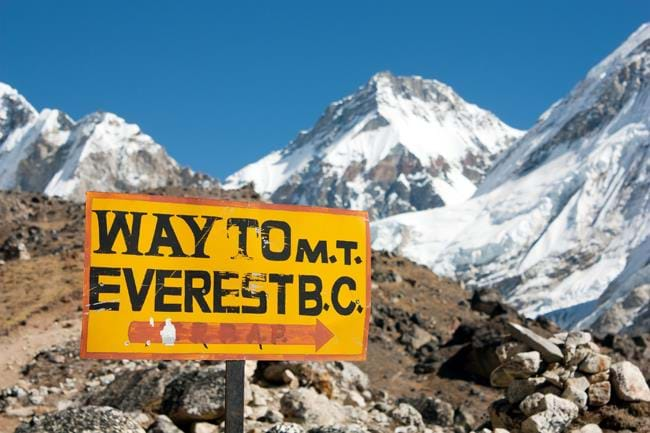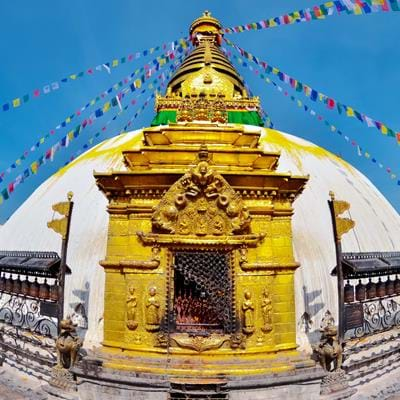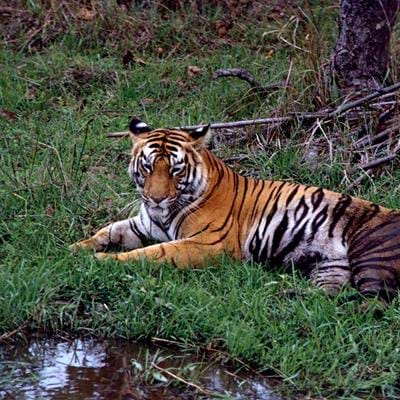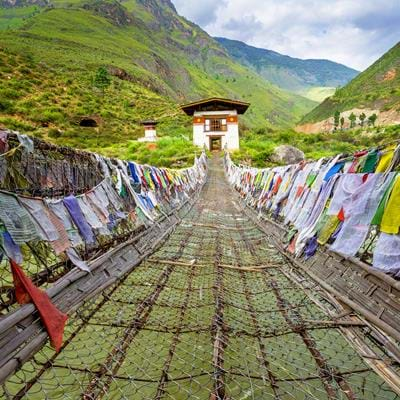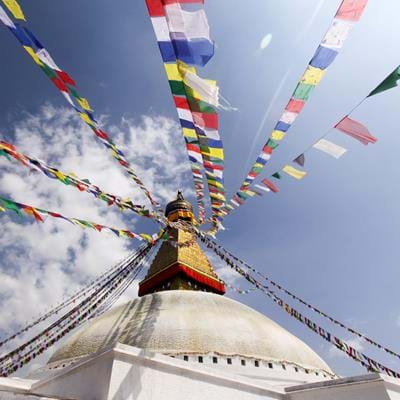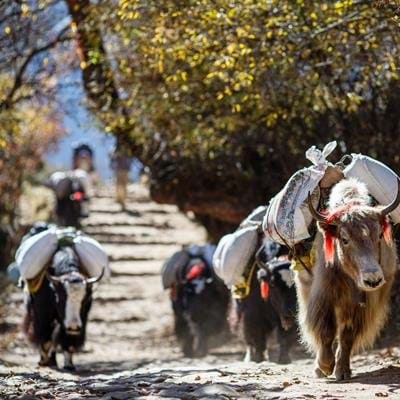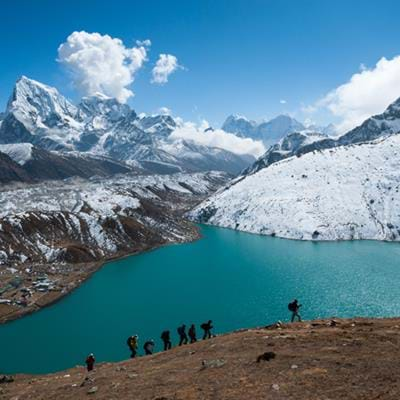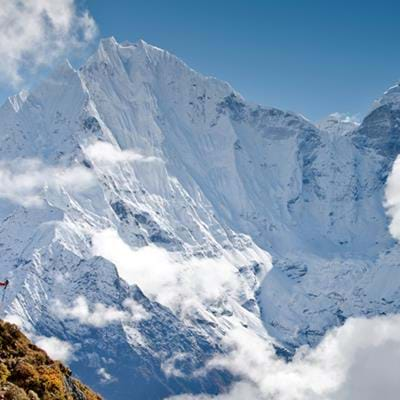Nepal 28.08.2014 David Abram
Nepal’s awe-inspiring scenery provides an inspirational backdrop for outdoor pursuits of many kinds, ranging from soft day treks to full-blown climbing or rafting expeditions in the Inner Himalaya. Whatever your dream adventure, with decades of experience arranging trips in this part of the world, TransIndus can make it happen.
In partnership with local experts on the ground, we’ll advise on the best route and accommodation options, arrange any permits or equipment that may be necessary and hire tried-and-tested, professionally trained staff to accompany you if required, leaving you free to enjoy the remarkable scenery and Nepali hospitality unencumbered by logistics.
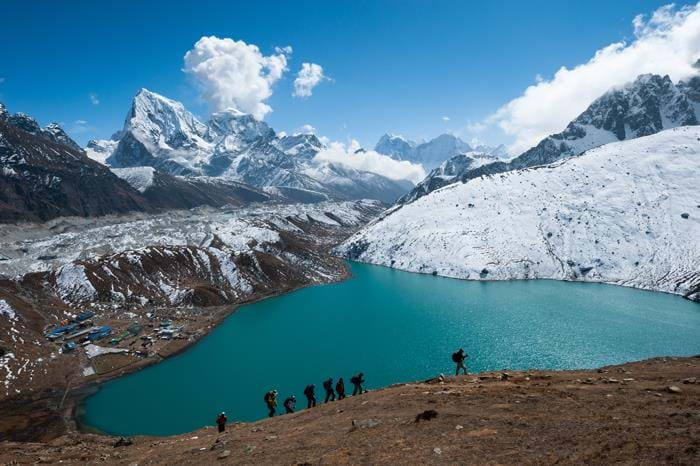
Walking and Trekking
The Annapurna region in the west and Everest region in the east are Nepal’s principal trekking areas, attracting walkers from across the world in spring and autumn, when visibility and weather conditions are optimum. The scenery in both is in a league of its own, though requires considerable time, effort and levels of fitness to enjoy to the full. As a consequence, TransIndus also offer in a range of more leisurely routes, ranging from one day to a fortnight in duration. As well as being less physically strenuous, these avoid the problems associated with altitude that complicate and extend itineraries to higher regions. Our favoured low-altitude routes are also served by some particularly comfortable, beautifully situated accommodation.
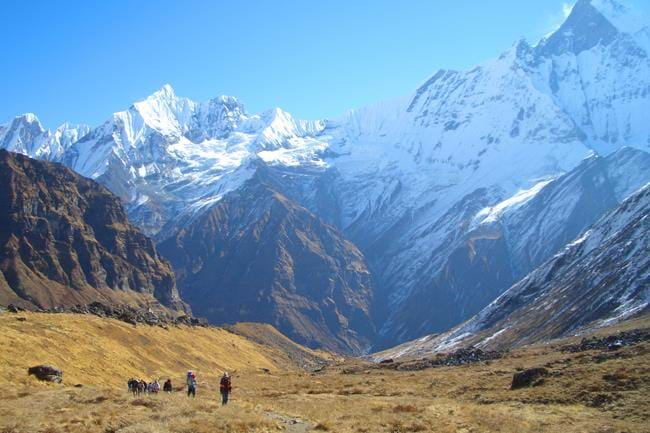
The best way to settle on the most suitable route for you is to discuss your requirements with one of our specialists in the London office. Whatever your chosen itinerary, rest assured all our treks are accompanied by experienced guides, cooks and porters, and that we conform to the guidelines set out by the International Porter Protection Group, limiting the weight carried by porters and ensuring fair wages.
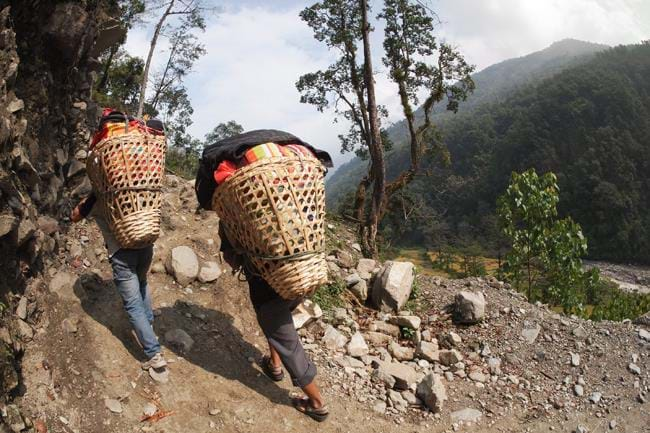
In the Annapurna Region
The mighty Annapurna himal ‒ nearly 40km across and with nine massive peaks ‒ virtually bisects the vast 7629km2 Annapurna Conservation Area (ACA) which has long been home to some of the country’s most popular treks. Its benchmark route is the strenuous Annapurna Circuit, traditionally a 2- to 3-week extravaganza with a very high pass and an incredible range of scenery. The shorter Annapurna Base Camp trek takes hikers into the heart of the amphitheatre-like Annapurna Sanctuary, while the little-visited (and once quasi-independent) region of Mustang, a Buddhist area adjoining Tibet, hosts the wonderful Mustang Trek ‒ essentially a spur off the main Circuit ‒ up to the old walled town of Lo Manthang.
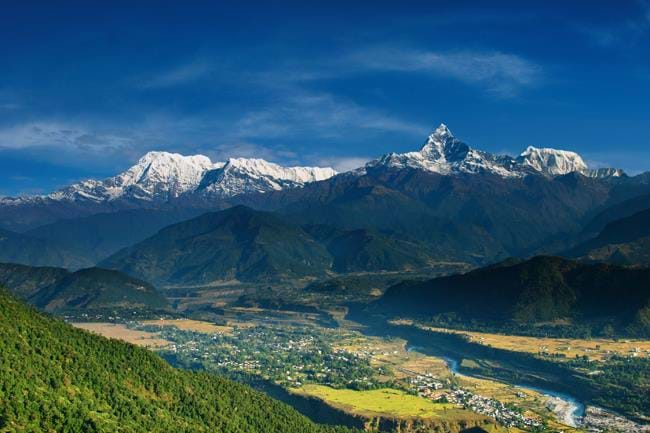
Other shorter and far less demanding treks include Poon Hill west of Pokhara, and the Siklis and Royal Treks north and east of Pokhara. Adjoining the ACA, the Manaslu Conservation Area and its classic 2-week Manaslu Circuit trek looks set to become increasingly popular with its fantastic scenery and varied terrain and culture. An added incentive to venture into the Annapuran region are the luxury lodges operated by the firm Ker & Downey. Dotted at half-day intervals around the Conservation Area, each overlooks pretty, slate-roofed mountain villages and enjoys fabulous views of the snow peaks. The rooms are beautifully furnished with comfy beds and traditional textiles, and have en suite bathrooms with running hot water.
In the Everest Region
Nowhere else in Nepal attracts the same level of attention as the Everest (or Solukhumbu) region northeast of Kathmandu, home to the world’s highest summit, Mt Everest, known to most Nepalis as Sagarmatha, and to the local Sherpa people who inhabit the beautiful valleys near the great mountain’s foot as Chomolungma, ‘Mother Goddess of the World’.
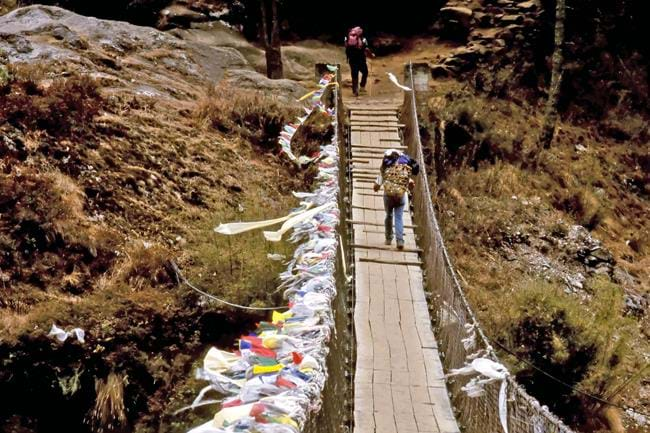
The famous Everest Trek ‒ usually 2 to 3-weeks ‒ is the second most popular one in the country. Essentially, the route involves either a five to six-day walk in (great for acclimatisation and fitness) or short flight to the mountain airstrip of Lukla before hiking into the high mountains stretching north of the Sherpa ‘capital’ of Namche Bazaar. Beyond here, the route options and staggering views multiply, with detours to side valleys, additional knee-cracking passes and the serenely beautiful lakes at Gokyo. Everest Base Camp is often the ultimate target but fuller mesmerising views are had from Gorak Shep and nearby Kala Patthar, a ridgeline prominence at around 5600m ‒ likely the highest point to which most visitors will ever walk in their lives.
